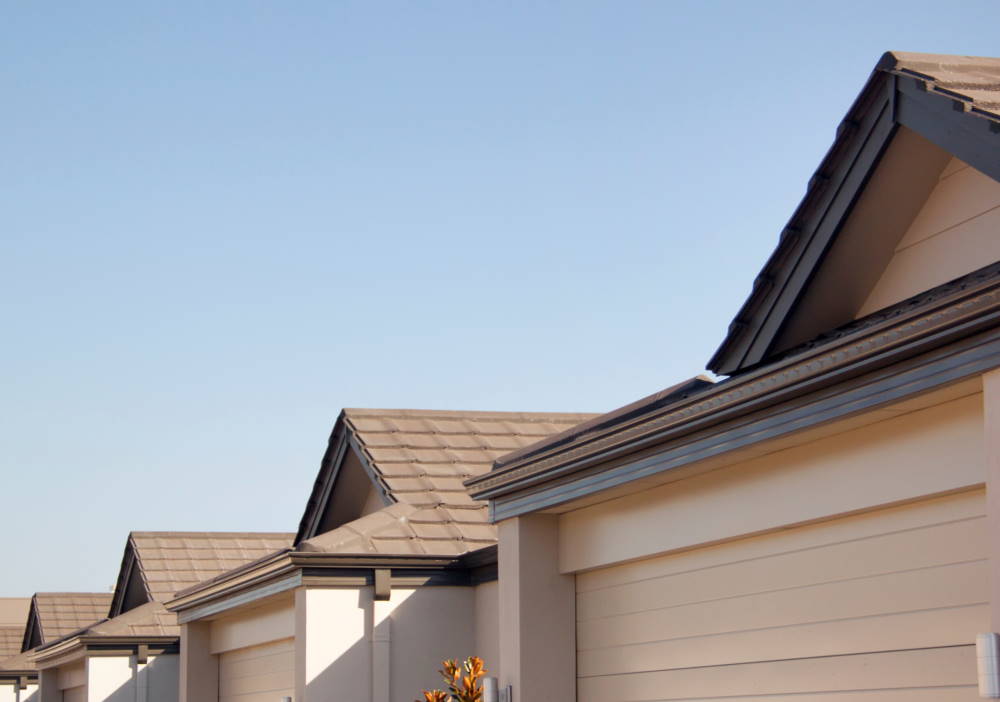Seasoned real estate investors know that the purchase price is just the starting point. While acquisition and rehab costs are usually front and center in deal analysis, carrying costs often go underestimated—and they can quietly erode profits if not carefully accounted for.
Whether you’re flipping a property or holding it as a rental, these ongoing expenses—such as loan interest, taxes, insurance, utilities, and more—accumulate for as long as you own the asset. The longer the holding period, the higher these costs climb, directly impacting your return on investment.
Accurate projections of carrying costs are essential to a profitable strategy. Failing to factor them in can turn what looked like a great deal on paper into a financial misstep.
So what exactly are these costs, and how should investors approach them? Let’s break down the most common carrying costs you’ll encounter as a real estate investor—so you can make smarter, more profitable decisions.
Carrying Costs All Investors Pay
All investors, both fix-and-flip and buy and hold investors usually pay the following carrying costs:
1- Mortgage or Loan Payment (Principal and Interest)
This is the monthly payment made to a lender, which includes both the repayment of the loan principal and the interest charged for borrowing the money. It’s typically the largest and most consistent carrying cost for most investors.
2 – HOA Fees (If Applicable)
Homeowners Association (HOA) fees are recurring charges paid to maintain common areas and amenities in certain communities. These are only applicable if the property is part of an HOA.
3 – Property Insurance
This cost covers insurance premiums that protect the property against damage, theft, and liability. Lenders usually require this insurance for the duration of the loan.
4 – Real Estate Taxes
These are government-imposed taxes based on the assessed value of the property, typically paid annually or semi-annually. They’re an unavoidable ongoing cost of property ownership.
5 – Utilities
Utilities include services such as electricity, water, gas, and sometimes trash collection or internet, which are necessary to keep the property functional and habitable. Investors must often cover these costs while the property is vacant or being renovated.
It’s worth noting that Fix and flip investors typically pay lower carrying costs because they usually only hold the property for a few months, or until the rehab is complete.
Carrying Costs For Fix And Flip Investors
Fix-and-flip investors must carefully factor in carrying costs both when making an offer on a property and when determining their target resale price. These costs can add up quickly, especially if the renovation takes longer than expected, cutting into potential profits.
Hard Money Loan Costs
One of the largest carrying costs for fix-and-flip projects is often the hard money loan used to finance the purchase and rehab. These loans typically come with higher interest rates and shorter repayment terms, making timely project completion essential. Every additional day the property remains unsold increases the total interest owed.
Vacant Property Insurance
In addition to loan interest, investors must account for vacant property insurance, which is typically more expensive than standard homeowner’s insurance. This type of coverage is crucial during renovations, especially when the property is unoccupied for extended periods.
Utilities
Utilities are another unavoidable expense. While a property is being renovated, contractors require access to electricity, water, heating, and cooling to complete their work efficiently and safely. These systems must remain functional not only during the rehab phase but also once the property is staged and listed for sale, as prospective buyers expect a move-in ready home.
Ultimately, keeping carrying costs low hinges on effective project management—minimizing delays, budgeting for the full duration of the project, and ensuring the property sells quickly once listed. Overlooking or underestimating these carrying costs can dramatically reduce profit margins, or even result in losses.
Carrying Costs For Buy And Hold Properties
Buy-and-hold investors face many of the same real estate carrying costs as fix-and-flip investors—but the impact is magnified by time. Holding a property for years (often five or more) means these ongoing expenses can significantly affect long-term profitability if not properly managed and budgeted for.
Most buy-and-hold investors finance their purchases, which introduces interest payments as a recurring cost over the life of the loan. Additionally, landlord insurance—which covers liability, tenant-related damages, and income loss—is typically more expensive than standard or vacant home insurance, and must be carried for the duration of ownership.
Beyond the basics, several other carrying costs are unique to long-term rental strategies:
Maintenance and Upkeep: As the property owner, you’re responsible for keeping the home in good condition. This includes routine maintenance (like HVAC servicing, landscaping, pest control) as well as unplanned repairs. These costs can be unpredictable and will steadily reduce your cash flow over time.
Property Management Fees: If you outsource tenant management, rent collection, and maintenance coordination to a professional property manager, you’ll pay a monthly management fee—often 8–12% of rental income. While it reduces hands-on work, it’s a notable carrying cost that must be factored into your ROI.
Utilities: If your lease includes utilities such as water, gas, electric, or trash removal, these expenses fall under your carrying costs. Even if tenants cover their own usage, landlords often still pay for common area utilities in multifamily buildings or duplexes.
Marketing and Leasing Costs: Whether you’re managing short-term rentals or traditional leases, there will be ongoing costs for tenant acquisition. This includes advertising vacant units, listing platform fees (like Airbnb or Zillow), and sometimes commissions to leasing agents.
Buy-and-hold success hinges on accurate financial forecasting, and carrying costs are a crucial variable. Smart investors budget for these long-term expenses from day one to ensure sustainable cash flow and predictable returns.
Calculating Carrying Costs
For Fix-and-Flip Investments
Step 1: Calculate Your Acquisition Costs
These are the upfront costs to purchase the property:
Down payment
Closing costs
Loan amount (if applicable)
Step 2: Estimate Your Monthly Carrying Costs
Include all applicable items, namely:
Loan interest
Insurance
Property taxes
Utilities
HOA fees (if any)
Step 3: Multiply Carrying Costs by the Holding Period
Estimate how many months you’ll hold the property before it’s sold.
Example: $1,200/month x 4 months = $4,800 total carrying costs
Step 4: Add It All Up
Total investment = Acquisition Costs + Rehab Costs + Carrying Costs
Step 5: Calculate ROI
Use this formula:
ROI = (Profit ÷ Total Investment)
In the formula above, Profit = Sale Price – Total Investment
For Buy-and-Hold Investments
Step 1: Estimate Annual Carrying Costs
Multiply your monthly carrying costs by 12 to get the annual total.
Step 2: Estimate Annual Rental Income
Multiply your expected monthly rent by 12. If you have multiple units, calculate the total rent accordingly.
Step 3: Determine Cash Flow
Cash Flow = Annual Rental Income – Annual Carrying Costs
Step 4: Calculate ROI
ROI = (Annual Cash Flow ÷ Initial Investment)
Initial Investment = Down Payment + Closing Costs
Key Takeaways
1. Carrying Costs Directly Impact Your ROI
Whether you’re flipping a property or holding it as a rental, carrying costs quietly eat into your profit margin. Ignoring them or underestimating their duration can turn a good-looking deal into a financial mistake. Always include them in your initial analysis to avoid surprises later.
2. Shorter Holding Period = Higher Profit Potential
For fix-and-flip investors, every month you hold the property adds more cost without increasing its value. Speed is critical. Efficient project management, realistic timelines, and fast resale all help minimize carrying costs and maximize ROI.
3. Cash Flow is King for Buy-and-Hold Deals
In rental property investing, carrying costs are part of your ongoing operational expenses. You want your monthly rental income to exceed your monthly carrying costs—ideally by a healthy margin. Positive cash flow leads to a stronger ROI and a more sustainable investment.
4. Include All Possible Expenses
Many investors forget to account for less obvious costs like:
Property management fees
Seasonal utility spikes
Vacancy periods (where rent isn’t coming in, but costs continue)
Routine maintenance and unexpected repairs
Marketing or leasing fees (especially for short-term rentals)
Build a cushion into your budget for these. Conservative estimates protect your margins.
5. ROI Isn’t Just About the Purchase Price
A cheap property with high carrying costs can be a worse investment than a more expensive property with low, predictable expenses. Look at the full cost of ownership, not just the upfront price tag.
6. Use Carrying Costs to Set Better Goals and Exit Plans
Knowing your monthly burn rate helps you plan. For flips, it can guide pricing strategy and urgency to sell. For rentals, it can help define your break-even point and minimum viable rent.
7. Revisit and Update Your Estimates Regularly
Markets change. Property taxes rise. Utility rates fluctuate. Insurance premiums go up. Review your carrying costs annually or with every new investment to ensure your numbers stay accurate.
What Fees Don't Count As Carrying Costs In Real Estate?
Carrying costs are the recurring charges you incur for the continued ownership of a property. However, not every fee related to property transactions falls under this category.
So, which fees don’t qualify as carrying charges?
- Closing Costs: These are one-time expenses paid at the finalization of the property purchase. They cover services like title insurance, appraisals, and more.
- Down Payment: This initial sum contributes to purchasing the property but is separate from ongoing ownership costs.
- Real Estate Agent Fees: Realtor fees are typically paid upon the successful sale or purchase of a property, not during its ownership.
- Earnest Money Deposit: A good faith payment made to show serious intent to purchase the property, which doesn’t continue beyond the closing.
- Moving Expenses: Costs related to relocating belongings to and from the property, not the costs accrued while living in it.
Understanding these distinctions helps streamline your real estate budget and avoid confusion about continuing financial obligations as a property owner.



